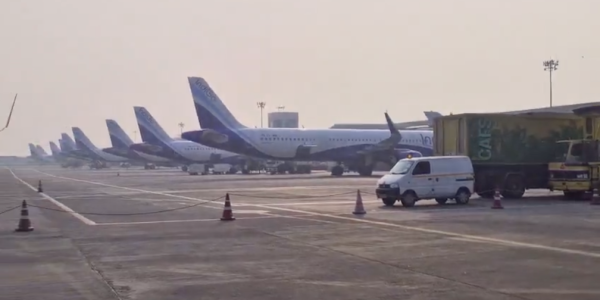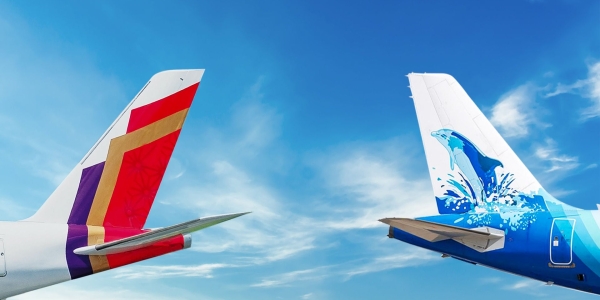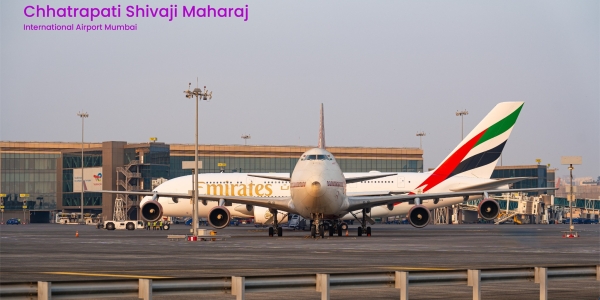Top 10 Oldest Airlines in the World – A Journey Through Aviation History
- KLM (1919) is the world’s oldest airline still flying under its original name.
- Avianca (1919) is the oldest in the Americas and a leading Latin American carrier.
- Qantas (1920) set global safety and long-haul flight standards.
- Delta (1924) grew from crop-dusting into one of the world’s largest airlines.
- Adaptability and innovation are the common reasons these airlines survived for over a century.
Top 10 Oldest Airlines in the World
Aviation has transformed the way people and goods move across the globe. While new airlines are launched every year, only a few carriers have stood the test of time. The oldest airlines in the world not only pioneered air travel but also adapted to decades of technological, economic, and political changes. These airlines shaped the history of aviation and continue to play a vital role in the industry today.
Below is a detailed list of the top 10 oldest airlines still in operation, along with their foundation dates, histories, and present-day status.
1. KLM Royal Dutch Airlines (Founded 1919)

KLM, based in the Netherlands, holds the title of the world’s oldest airline still operating under its original name. Established in October 1919, it started with small aircraft flying between Amsterdam and London.
Today, KLM operates a large modern fleet and is part of the Air France–KLM group. Despite mergers, the airline has kept its original name and branding for over a century. Its Schiphol hub in Amsterdam is one of the busiest airports in Europe.
Key Facts:
- Founded: 1919
- Hub: Amsterdam Schiphol Airport
- Fleet: Over 110 aircraft
- Network: 150+ destinations worldwide
2. Avianca (Founded 1919)

Avianca, Colombia’s flag carrier, was founded in December 1919, making it the oldest airline in the Americas. Originally called SCADTA, it operated with small German aircraft over Colombia’s mountains and rivers.
The airline grew to connect South America with North America and Europe. It rebranded as Avianca in 1940 and is today one of the largest carriers in Latin America.
Key Facts:
- Founded: 1919
- Hub: Bogotá El Dorado International Airport
- Fleet: About 140 aircraft
- Network: 100+ destinations across the Americas and Europe
3. Qantas Airways (Founded 1920)

Known as the “Flying Kangaroo,” Qantas is the flag carrier of Australia and was founded in November 1920. It began as Queensland and Northern Territory Aerial Services, transporting mail and passengers across the outback.
Qantas became famous for pioneering long-distance flights and safety standards. Today, it is one of the world’s leading long-haul carriers, connecting Australia to Asia, Europe, and the U.S.
Key Facts:
- Founded: 1920
- Hub: Sydney Kingsford Smith Airport
- Fleet: Around 120 aircraft
- Network: Global, with ultra-long-haul services
4. Aeroflot (Founded 1923)

Aeroflot, the flag carrier of Russia, began in 1923 as Dobrolyot. During the Soviet era, it became the largest airline in the world, operating both domestic and international flights.
After the collapse of the Soviet Union, Aeroflot restructured into a modern airline. It remains one of Russia’s most recognized global brands, serving routes across Europe, Asia, and North America.
Key Facts:
- Founded: 1923
- Hub: Moscow Sheremetyevo International Airport
- Fleet: Over 180 aircraft
- Network: 100+ destinations
5. Czech Airlines (Founded 1923)

Czech Airlines (CSA) was established in October 1923 in what was then Czechoslovakia. Its first flight connected Prague to Bratislava.
The airline played a significant role in European aviation and became known for its Central European connections. Despite financial struggles in recent years, CSA remains one of the oldest names in aviation.
Key Facts:
- Founded: 1923
- Hub: Václav Havel Airport, Prague
- Fleet: Smaller fleet (5–10 aircraft) due to restructuring
- Network: Limited European and charter destinations
6. Finnair (Founded 1923)

Finnair, the flag carrier of Finland, was founded in November 1923. Initially called Aero O/Y, it began flying routes between Helsinki and Tallinn.
Over the years, Finnair developed a reputation for reliability and for connecting Europe to Asia via the shortest polar routes. It remains one of the safest airlines in the world, with no fatal accidents since the 1960s.
Key Facts:
- Founded: 1923
- Hub: Helsinki Airport
- Fleet: Over 60 aircraft
- Network: Europe, Asia, and North America
7. Delta Air Lines (Founded 1924)

Delta traces its roots back to 1924, when it started as Huff Daland Dusters, a crop-dusting company in the U.S. South. It began passenger services in 1929 and grew into one of the largest airlines in the world.
Delta is now a founding member of the SkyTeam alliance and operates a massive fleet with hubs across the U.S. Its global network connects six continents.
Key Facts:
- Founded: 1924
- Hub: Atlanta Hartsfield–Jackson International Airport
- Fleet: Over 900 aircraft
- Network: 300+ destinations worldwide
8. Tajik Air (Founded 1924)

Tajik Air, the national airline of Tajikistan, was founded in 1924 during the Soviet Union era. It began with small domestic flights across mountainous Central Asia.
Although much smaller today, it still holds the distinction of being among the world’s oldest airlines. Its fleet and routes have been reduced, but it continues to serve domestic and regional flights.
Key Facts:
- Founded: 1924
- Hub: Dushanbe International Airport
- Fleet: Small fleet of regional aircraft
- Network: Domestic and a few international routes
9. Iberia Airlines (Founded 1927)

Spain’s flag carrier, Iberia, was established in 1927 and quickly expanded across Europe and Latin America. The airline became a bridge between Spain and its former colonies.
Today, Iberia is part of the International Airlines Group (IAG), alongside British Airways. It has modernized its fleet and continues to be a leading airline on routes to Latin America.
Key Facts:
- Founded: 1927
- Hub: Madrid Barajas Airport
- Fleet: Around 85 aircraft
- Network: Europe, Africa, the Americas
10. Air Serbia (Formerly Aeroput, Founded 1927)

Air Serbia traces its roots to Aeroput, founded in Belgrade in 1927. Aeroput was one of the first airlines in the Balkans and provided services across Europe.
After several rebrandings, the airline became JAT Yugoslav Airlines and later Air Serbia. It continues to serve as Serbia’s national carrier, with a growing fleet and network.
Key Facts:
- Founded: 1927 (as Aeroput)
- Hub: Belgrade Nikola Tesla Airport
- Fleet: About 30 aircraft
- Network: Europe, Middle East, North America
Why These Airlines Survived
Many early airlines went bankrupt or were absorbed into larger carriers. The airlines on this list survived because they adapted to changing times:
- Strong government support in the case of flag carriers like Aeroflot, Iberia, and Air India’s counterparts.
- Strategic mergers and alliances, such as KLM joining forces with Air France, and Iberia with British Airways.
- Innovations in routes and safety, like Qantas pioneering ultra-long-haul flights and Finnair developing polar connections.
- Focus on global trade and diaspora travel, seen in Avianca and Delta’s expansion across continents.
The Legacy of the Oldest Airlines
The world’s oldest airlines are more than just transportation companies; they are symbols of national pride and pioneers of aviation history.
- KLM remains a proud Dutch brand with over 100 years of continuous operation.
- Avianca shows how airlines can grow from small operations to global players.
- Qantas is an example of innovation and safety in long-haul flying.
- Delta reflects how even a crop-dusting company can evolve into one of the largest airlines on Earth.
These airlines prove that longevity in aviation comes from adaptability, innovation, and customer trust.
Conclusion
The story of the world’s oldest airlines is also the story of aviation itself. From small propeller planes flying short distances to modern jets connecting continents, these airlines have lived through wars, economic crises, and technological revolutions.
While many airlines disappeared over the years, these ten carriers stayed in the skies. Their resilience and adaptability show how aviation has become one of the most important industries in the world. As they continue to evolve with new aircraft and digital innovations, these airlines are likely to remain in operation for many decades to come.



































